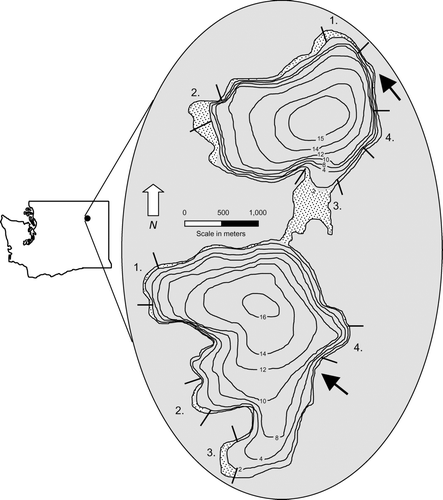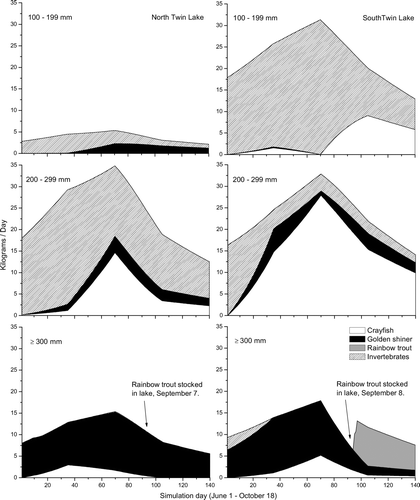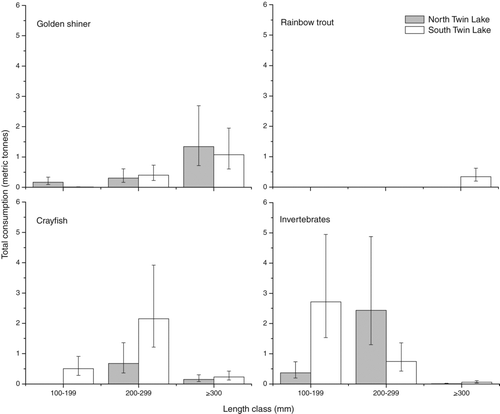Figures & data
Figure 1 Map depicting the bathymetry (in meters), macrophyte distribution (shaded), sampling transects (numbered), and location of North and South Twin Lakes, Washington. North Twin Lake transects were utilized for largemouth bass population analysis in 2004 and all transects in both lakes were utilized in the 2005 diet analysis. Arrows represent approximate location of hatchery rainbow trout release sites.

Table 1 Hatchery-raised rainbow trout (Oncorhynchus mykiss) stocking rates and size ranges in North and South Twin Lakes for 2005.
Table 2 Energy density estimates taken from the literature of fish and invertebrates common to the Twin Lakes.
Table 3 Schnabel multiple-census population data for North Twin Lake, 2004. Numbers are largemouth bass recaptured (marked), unmarked (captured), and marked (at-large) during each sampling period.
Table 4 Population estimates (N) and confidence intervals (CI) for largemouth bass feeding groups (FG) sampled from North and South Twin Lakes, 2005. Percentages are proportions of the total population for each feeding group.
Table 5 Mean length (mm), range (in parenthesis), and sample size (n) of prey consumed by largemouth bass by feeding groups (FG) in North (NT) and South Twin (ST) lakes, 2005. Age estimates are for largemouth bass.
Figure 2 Relationship between prey lengths versus largemouth bass size classes in North Twin Lake (left) and South Twin Lake (right), 2005.

Figure 3 Daily consumption of crayfish, golden shiner, rainbow trout, and invertebrates by largemouth bass feeding groups (100–199, 200–299, ⩾ 300 mm) in North Twin Lake (left) and South Twin Lake (right) during 2005 as estimated by a bioenergetics model.

Figure 4 Total consumption in metric tonnes (± 95% confidence interval) from June 1 to October 18 of golden shiner, rainbow trout, crayfish, and invertebrates by largemouth bass feeding groups (100–199, 200–299, ⩾300 mm) in North and South Twin Lakes during 2005 as estimated by a bioenergetics model.
